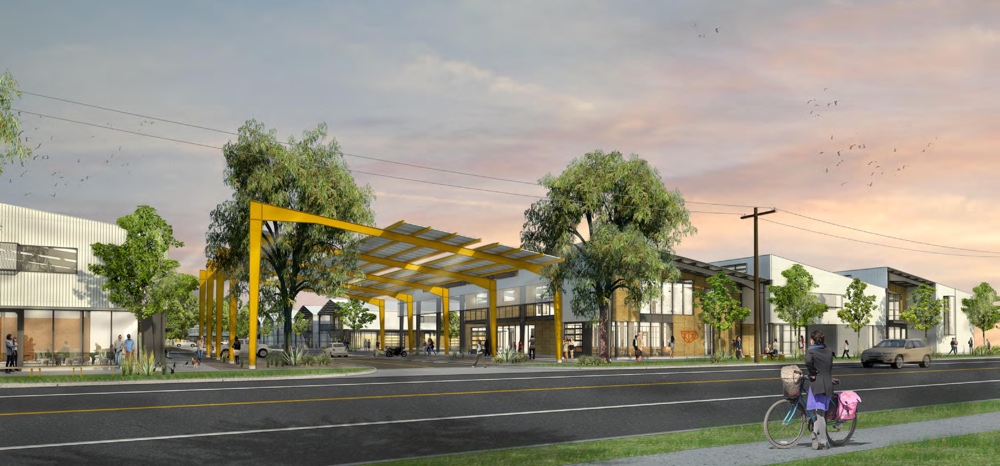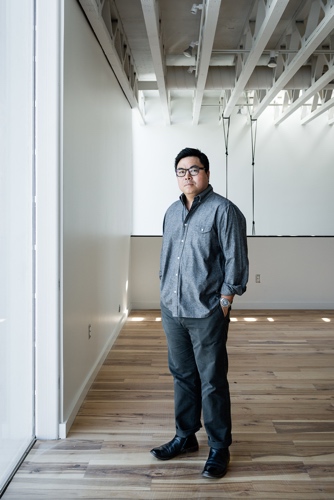
Building Company Culture from the Ground Up
Those seeking to create or improve their organization’s culture usually look within. Believe it or not, though, building company culture starts on the outside – with the very space you occupy.
 Recently, the RAD Office Tour in Austin, TX, explored this very notion on a self-guided tour showcasing eleven workplaces that support great company cultures. According to RAD co-founder Jordan Bresler, workplaces making the tour all feature, “a strong point of view about what makes teams most effective, and [demonstrate] how thoughtful workplaces promote creativity, collaboration, and productivity”. In a town known for its creative flair and openness to new ideas, one project in particular stands out for its emphasis on building company culture literally from the ground up by embracing a new wave of social and architectural innovation.
Recently, the RAD Office Tour in Austin, TX, explored this very notion on a self-guided tour showcasing eleven workplaces that support great company cultures. According to RAD co-founder Jordan Bresler, workplaces making the tour all feature, “a strong point of view about what makes teams most effective, and [demonstrate] how thoughtful workplaces promote creativity, collaboration, and productivity”. In a town known for its creative flair and openness to new ideas, one project in particular stands out for its emphasis on building company culture literally from the ground up by embracing a new wave of social and architectural innovation.
Austin, like many popular cities, has become a victim of its own success. The very people who gave the city its attractive vibe – musicians, artists, coders, makers, and designers – are now being pushed out by the growing cost of working and living there. Enter Springdale General, a new East Austin development that offers affordable maker studios, creative office space, test kitchens, and workshops. Not only was this space created to help save the creative class; it was designed to enhance it. Michael Hsu was tapped to do the design. The renowned Austin architect had just completed work on a similar, although smaller, creative workspace called Canopy. With consultant Ryan Steglich and a team from innovative nonprofit Notley on board (as both a partner and a tenant), work on the Springdale campus began.
“Campus” is a term we use to describe this development . . . when you think about a university, where you may have a school of engineering, and the art school, and the school of philosophy – you want those people rubbing elbows, because that’s where really interesting things happen.”
Ryan Steglich
Development Partner, Springdale General
Principal, Steglich Consulting

Springdale General campus in Austin designed by Michael Hsu
That campus spirit of meeting new people has been baked into the workspace’s DNA. Walkways, covered entries and a large courtyard connect each building, a perfect set-up for serendipitous interactions. Community spaces are woven throughout the buildings, again to foster interactions among the development’s entrepreneurial artisans. A café anchors the campus, pulling in the community at large for even more sources of inspiration and engagement. Even the practical amenities were designed to enhance a culture of innovation: Car 2 Go parking, rain catchment, solar power, and bike-friendliness. The bottom line, say Springdale Center’s founders, is to create a design and culture that embraces “life space” instead of workspace.
The nonprofit sector is both a beneficiary and key player in this approach. Notley is creating The Center for Social Innovation in six buildings of the Springdale space. By allowing nonprofits, social enterprises, and city innovation leaders to gather in the same inspiring, collaborative environment, Notely hopes to foster a similar creative culture for Austin’s social innovation ecosystem.
Whether your organization is part of the creative class or not, workspace has a profound influence on building company culture. Want to change yours? Hsu, the architect behind Springdale General, offers this advice on creating culture through design.

Michael Hsu, AIA, IIDA, Principal, Michael Hsu Office of Architecture
Michael Hsu’s Stout Takeaways on Design and Organizational Culture:
Architecture is physical representation of the intangible thing that is a company. Both the exterior and interior elements set an expectation of how not only employees, but also clients/customers who pass through should act or feel. That directly translates to how an employee performs or a client reacts.
First impressions count. The entry sequence is huge; it is the first impression people have and sets the tone for your entire interaction. If it is energizing and inspiring, or calming and comforting, it will have a different effect than something that is confusing or awkward or disappointing.
Planning for culture through design is vital. Every decision made in the design process should be influenced and driven by the company’s culture. We constantly have to ask ourselves if the design supports the overall objective or hinders it.
You don’t have to build from scratch. Organizations with an already-existing workspace can make changes to improve their company culture as well. It starts with identifying the goals for that culture and what you currently have in place that is working, and what isn’t.
It’s not a one-size-fits-all proposition. Be open-minded to the idea that in order to get different results, you have to use different strategies. It is important to embrace some of the risk-taking that comes with trying to revolutionize a work space.
A strong organizational culture is created from the inside and out. Learn more from Michael Hsu in this Face2Face video. And for more Stout insights into building company culture, check out Creative Leadership: Building Company Culture Through Collaboration;Cultural Evolution: How to Promote Change to Achieve Company (and Personal) Success; and Does Your Company Meet the Nine Key Benchmarks for Healthy Culture?
